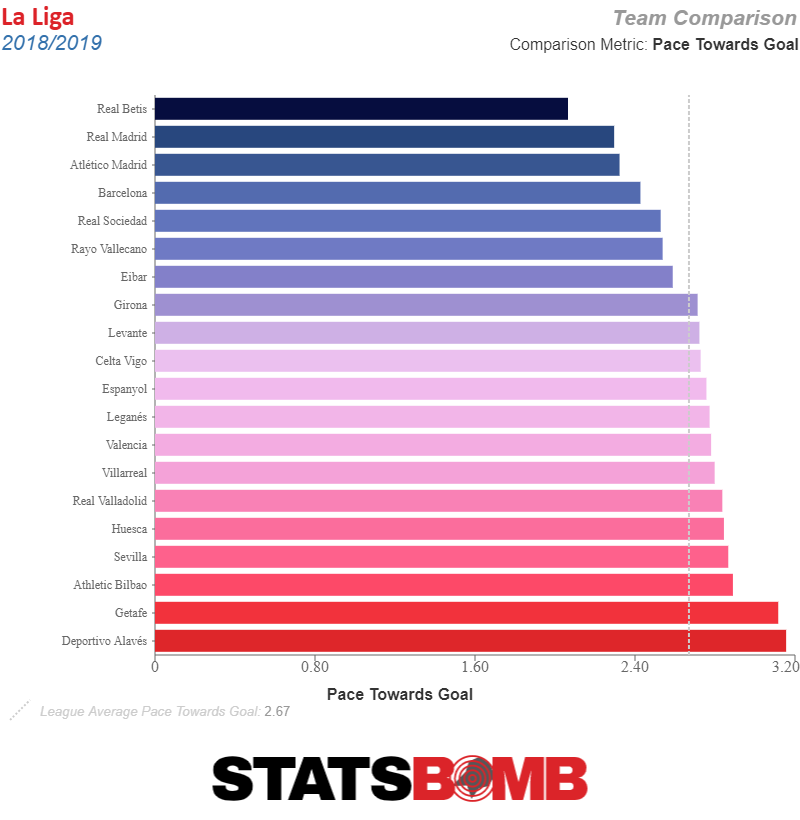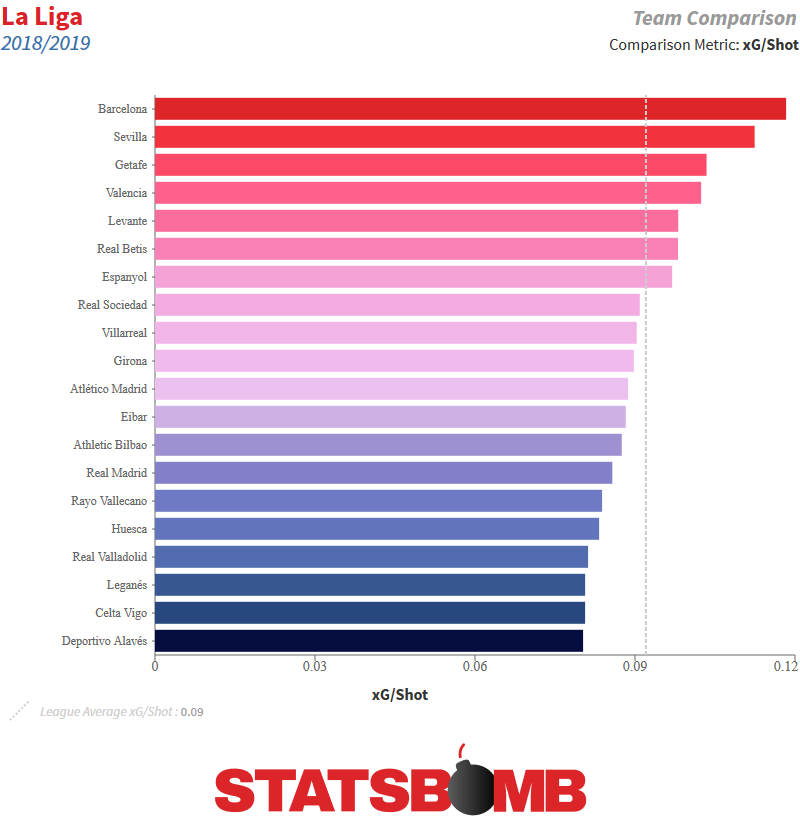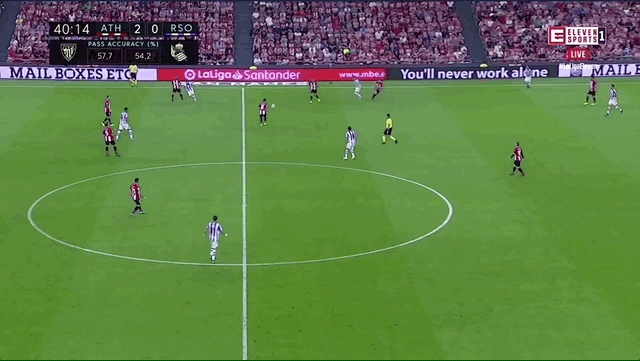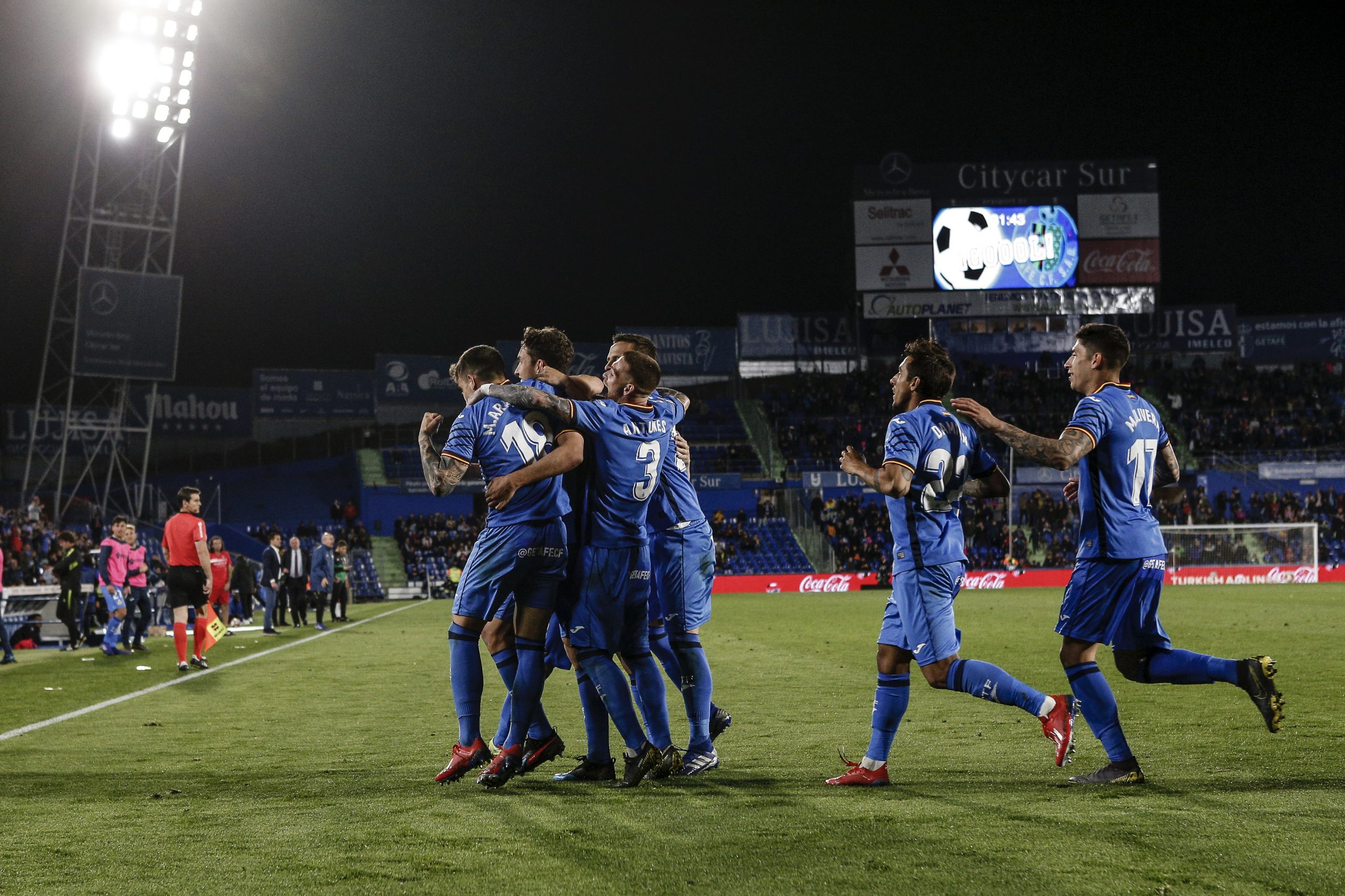Getafe’s push for Champions League qualification should be a fairytale story. A small team from a small commuter city to the south of Madrid, with a small budget, small stadium and even smaller crowds, they should evoke widespread sympathy and support. Even more so when one considers that their squad is filled with stories of toil and perseverance. Stories like those of Jaime Mata, who made his top-flight debut aged 29 after scoring at every level from the Tercera División (the fourth tier of Spanish football) upwards and is currently La Liga’s top scoring Spaniard; his strike partner Jorge Molina, who first got out of the fourth tier at 23, made his debut in the Primera at 29 and now, at 36, is providing a goal or assist every other game; and José Bordalás, who started his coaching career nearly quarter of a century ago but didn’t reach the top flight until the start of last season, a year after gaining promotion with Alavés only to be ushered aside having done so. It should be a fairytale story, but that isn’t the way it has largely been portrayed. That is because Getafe practice a style of play that has variously been described as negative, aggressive, even thuggish. Add in the consistently inflammatory utterings of their president Ángel Torres and you have a team who are not well liked. Supporters of Valencia and Leganés recently chanted in unison: “Fuck Getafe!” Bordalás bristles at the suggestion his side are primarily spoilers, but it is true that they foul more often than any other side in La Liga, and that their matches feature fewer combined passes (858) and shots (20.6) than other team. There is no getting away from the fact that they like to break games down into distinct passages of play, that they take few risks in attack, and that they are supremely well-organised out of possession. But they are also a very interesting team from a statistical standpoint, one with a unique profile across the big five European leagues. Getafe have little use for extended periods of possession. In the big five leagues, they are one of only 10 teams to complete less than 400 passes per match. Only Cardiff complete less. But Getafe neither defend nor attack like a typical team of that type. It is very rare to see a team that hold such a low share of the ball press as high and aggressively as Getafe do out of possession. There is certainly far from perfect correlation at work, but three of the top four teams in La Liga in terms of possession share are also in the top four in terms of the distance from their own goal they perform their average defensive action. The two major outliers are Real Betis (with the second highest possession share and 14th deepest defensive distance) and Getafe: second in terms of defensive distance but bottom of the league for possession, at just a 40% share. Amongst a group of 10 teams who complete less than 400 passes per match, only Getafe and Burnley rank within the top three in their respective leagues in terms of defensive distance. The others defend much deeper. And while Burnley are similar by that measure, they are much less proactive in contesting the ball and forcing turnovers, or at least have been in 2018-19. That is where Getafe really stand out. They only allow around nine opposition passes per defensive action (tackle, interception, foul), the eighth lowest in La Liga, while 27% of their defensive actions are classified as aggressive actions (tackles, pressure events and fouls that a team makes within two seconds of an opposition ball receipt). It is simply very difficult for opponents to pick a way through and get off shots, as their league third-best rank of just 10.5 shots conceded per match indicates. Their defensive activity map shows the extent to which their defensive work primarily occurs in opposition territory.  At a player level, much of the pressing is done by the central midfielders and the two wide players in the 4-4-2 formation favoured by Bordalás. Mauro Arambarri leads the way with a league sixth-best 28.9 per 90.
At a player level, much of the pressing is done by the central midfielders and the two wide players in the 4-4-2 formation favoured by Bordalás. Mauro Arambarri leads the way with a league sixth-best 28.9 per 90.  Arambarri is one of a cadre of Uruguayans (alongside Leandro Cabrera, Damián Suárez, Mathías Olivera and Sebastián Cristóforo) well-suited to a committed and competitive outfit. His ability to get about the pitch, sense danger and block off routes forward is perhaps best encapsulated by this clip of his foul on William Carvalho early into Getafe’s recent win away to Real Betis. See the way he anticipates the turnover of possession and quickly makes up ground to get right on top of Carvalho, who only escapes by means of some neat footwork.
Arambarri is one of a cadre of Uruguayans (alongside Leandro Cabrera, Damián Suárez, Mathías Olivera and Sebastián Cristóforo) well-suited to a committed and competitive outfit. His ability to get about the pitch, sense danger and block off routes forward is perhaps best encapsulated by this clip of his foul on William Carvalho early into Getafe’s recent win away to Real Betis. See the way he anticipates the turnover of possession and quickly makes up ground to get right on top of Carvalho, who only escapes by means of some neat footwork.  It also displays another key element in Getafe’s game: the tactical foul. This is a team who seek to consistently maintain an orderly shape out of possession. Whenever that is in danger, they have no qualms about bringing play to a halt. Again, it is notable how many of these fouls occur in high areas. Compare where Huesca, La Liga’s second most frequent foulers, commit their infractions.
It also displays another key element in Getafe’s game: the tactical foul. This is a team who seek to consistently maintain an orderly shape out of possession. Whenever that is in danger, they have no qualms about bringing play to a halt. Again, it is notable how many of these fouls occur in high areas. Compare where Huesca, La Liga’s second most frequent foulers, commit their infractions.  To where Getafe enact theirs.
To where Getafe enact theirs.  Add all of those elements together and you have one of the best defences in Spain.
Add all of those elements together and you have one of the best defences in Spain.  Football is a continuous and dynamic game, and the manner in which a team attacks is indivisible from the way they defend. As such, it is very much the case that Getafe’s strong defensive numbers and structure are directly linked to the way they attack. Getafe’s attacks are focused down the flanks. It is relatively rare to see a team where both full-backs are the ones primarily responsible for moving the ball into the final third. Last season, Eibar and Getafe were the only two sides like that in La Liga. This time around, it is again right-back Damián Suárez and left-back Vitorino Antunes who lead the way.
Football is a continuous and dynamic game, and the manner in which a team attacks is indivisible from the way they defend. As such, it is very much the case that Getafe’s strong defensive numbers and structure are directly linked to the way they attack. Getafe’s attacks are focused down the flanks. It is relatively rare to see a team where both full-backs are the ones primarily responsible for moving the ball into the final third. Last season, Eibar and Getafe were the only two sides like that in La Liga. This time around, it is again right-back Damián Suárez and left-back Vitorino Antunes who lead the way.  The general route forward is a ball down the line to one of the two forwards pulling wide or a pass into the feet of a player dropping into the inside channel on that side, either the other forward or the wide player drifting infield. Three or four players are accumulated in relatively tight confines to try and work an overload to get in behind. If possession is lost, there are sufficient bodies in and around the ball to immediately pressurise it. It is easier to collapse upon the opposition there than in central areas where there are more potential out-balls. If progress isn’t made on one side, the ball is quickly switched to the other flank. No team in La Liga move forward as quickly as Getafe do.
The general route forward is a ball down the line to one of the two forwards pulling wide or a pass into the feet of a player dropping into the inside channel on that side, either the other forward or the wide player drifting infield. Three or four players are accumulated in relatively tight confines to try and work an overload to get in behind. If possession is lost, there are sufficient bodies in and around the ball to immediately pressurise it. It is easier to collapse upon the opposition there than in central areas where there are more potential out-balls. If progress isn’t made on one side, the ball is quickly switched to the other flank. No team in La Liga move forward as quickly as Getafe do.  Most possession-light teams generate a significant percentage of their xG from set pieces and open-play crosses. Indeed, among those aforementioned 10 in the big-five leagues with less than 400 passes per match to their name, four of them create over half of their xG that way. Getafe, though, create less than 35% of theirs by those two methods. In La Liga, only Barcelona create a lower percentage that way. Getafe seek better shots. They may take less of them than all but Athletic Club, but when they do create chances they are generally high-quality ones, among the very best in the league.
Most possession-light teams generate a significant percentage of their xG from set pieces and open-play crosses. Indeed, among those aforementioned 10 in the big-five leagues with less than 400 passes per match to their name, four of them create over half of their xG that way. Getafe, though, create less than 35% of theirs by those two methods. In La Liga, only Barcelona create a lower percentage that way. Getafe seek better shots. They may take less of them than all but Athletic Club, but when they do create chances they are generally high-quality ones, among the very best in the league.  And they manage to do so without ever committing too many men forward. The second goal in the recent win over Real Betis demonstrates Getafe at their incisive best. From the relatively nothing situation of a contested high ball forward, a series of swift interchanges see Francisco Portillo and Molina combine to release Mata in behind to score.
And they manage to do so without ever committing too many men forward. The second goal in the recent win over Real Betis demonstrates Getafe at their incisive best. From the relatively nothing situation of a contested high ball forward, a series of swift interchanges see Francisco Portillo and Molina combine to release Mata in behind to score.  The end result is that while Getafe have been very marginally outshot (10.1 for; 10.5 against) this season, their xG balance is a favourable 0.14 per match. They are La Liga’s sixth best team by that measure, and while there are sides with a better xGD still within distance of them, four wins in their last five have not only seen them leapfrog fellow surprise act Alavés and a floundering Sevilla side into fourth place but also establish a four-point cushion there. It may not be the prettiest way of playing, it may engender complaints from opposing players, coaches and supporters, but it is working. The team with the fifth lowest budget in La Liga have a good chance (47% by FiveThirtyEight’s reckoning) of qualifying for the Champions League for the first time in their history. In Getafe, at least, that would represent a genuine fairytale ending.
The end result is that while Getafe have been very marginally outshot (10.1 for; 10.5 against) this season, their xG balance is a favourable 0.14 per match. They are La Liga’s sixth best team by that measure, and while there are sides with a better xGD still within distance of them, four wins in their last five have not only seen them leapfrog fellow surprise act Alavés and a floundering Sevilla side into fourth place but also establish a four-point cushion there. It may not be the prettiest way of playing, it may engender complaints from opposing players, coaches and supporters, but it is working. The team with the fifth lowest budget in La Liga have a good chance (47% by FiveThirtyEight’s reckoning) of qualifying for the Champions League for the first time in their history. In Getafe, at least, that would represent a genuine fairytale ending.
2019
La Liga's Best of The Rest? Getafe Charge At the Champion League Places
By admin
|
March 13, 2019
